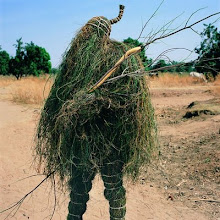The bee in the top photo may actually be a fly that has evolved stripes to mimic those of the bee. If a predator thinks you might sting its tongue, it thinks twice before trying to eat you. I love the vertical stripes in the center segment and the horizontal stripes on the thorax. It's a good look.
From the photos of all the flowers is growing I thought that Lahore must be in a hot, humid tropical region. I was right about the hot part, Lahore is in a semi-arid region with long hot summers, as in well over a hundred degrees, a monsoon season and then dry mild winters. It is the capital of the Punjab province, with a population of 10 million, making it the second largest city in Pakistan and the 5th largest city in South Asia, 26th largest in the world. It is known as the City of Gardens, which may explain, along with the climate, why so many insects flourish in such an urban area with a high human population. When you see a container garden in a large urban city like Lahore covered with butterflies, moths, bees and flies, it makes you wonder how here in San Francisco, a city of a mere 800,000, can emulate it and bring back some of the natural diversity to our own city.
This bee resembles the queen in a honeybee colony with its elongated body.
But the queen is not usually out working on the flowers. So this is some kind of native bee.
This bee is possibly a carpenter bee.






No comments:
Post a Comment